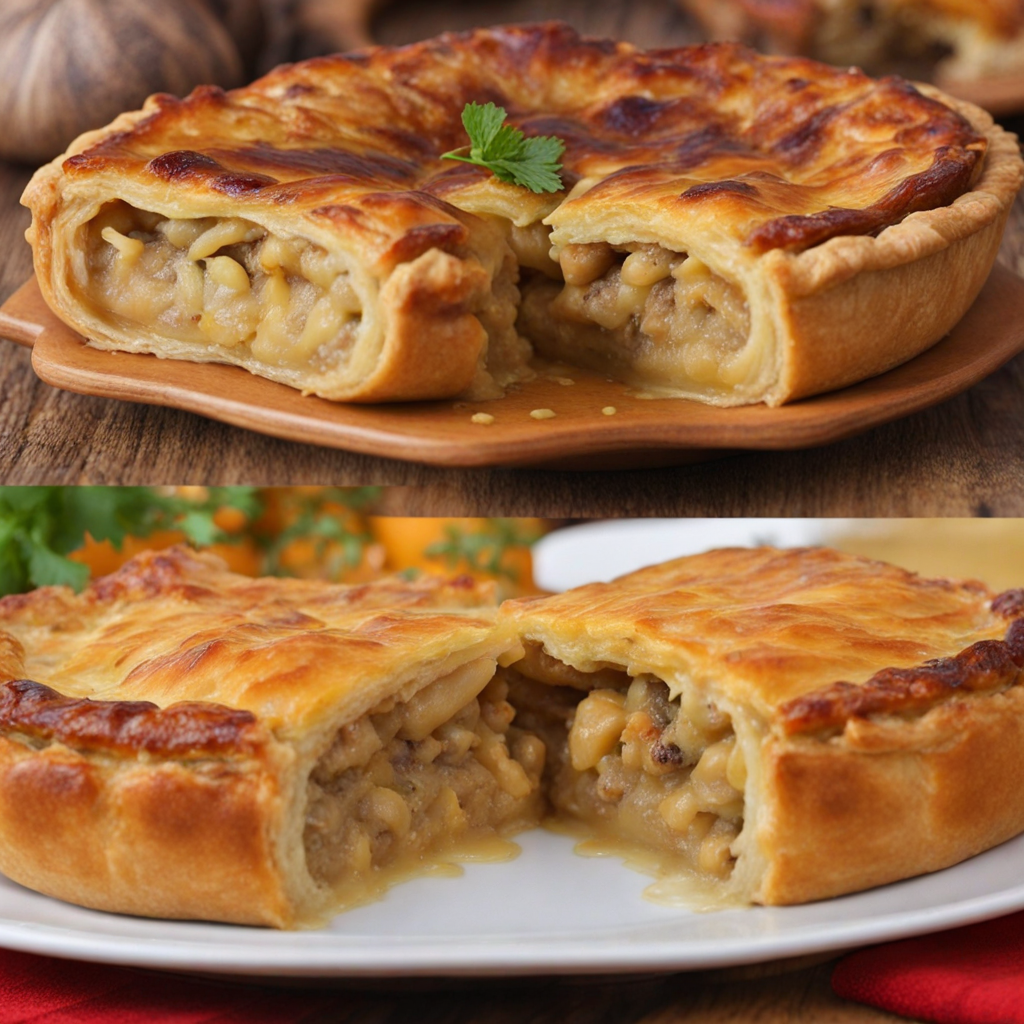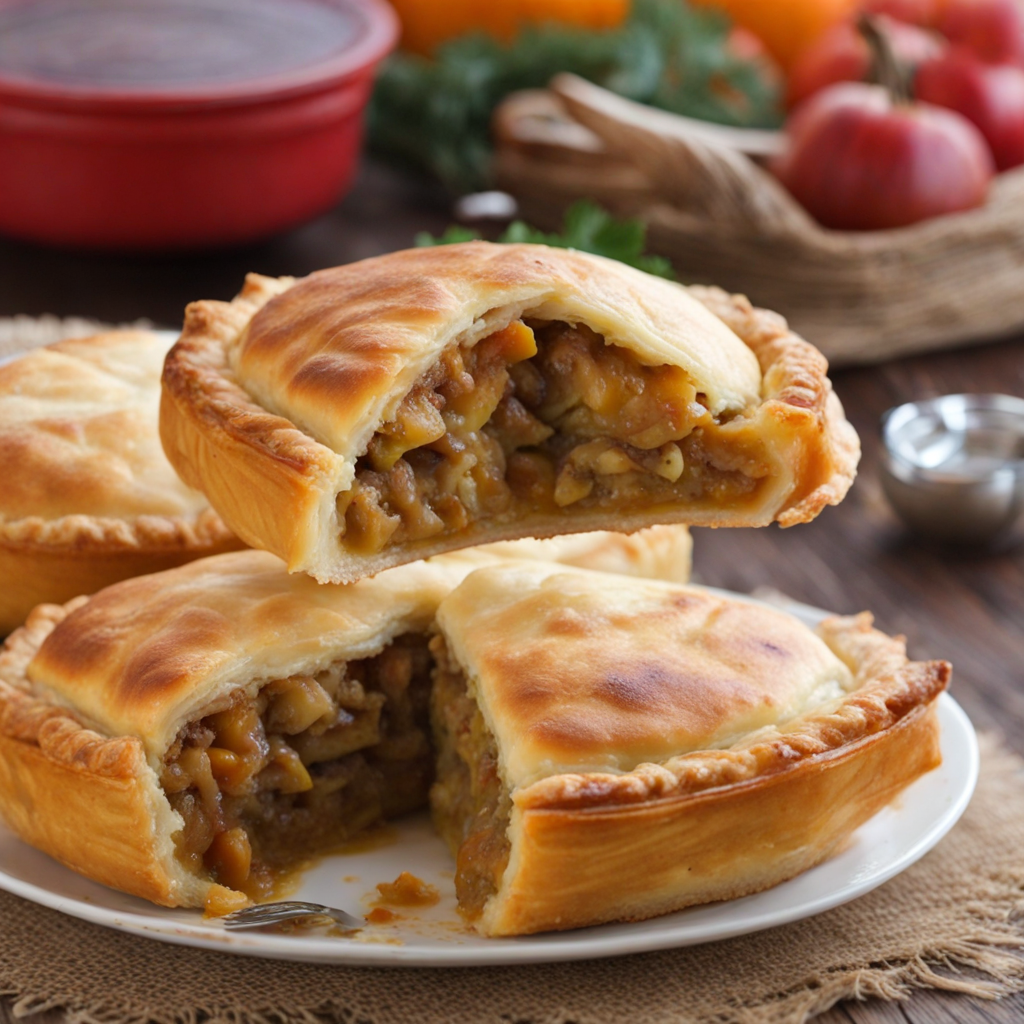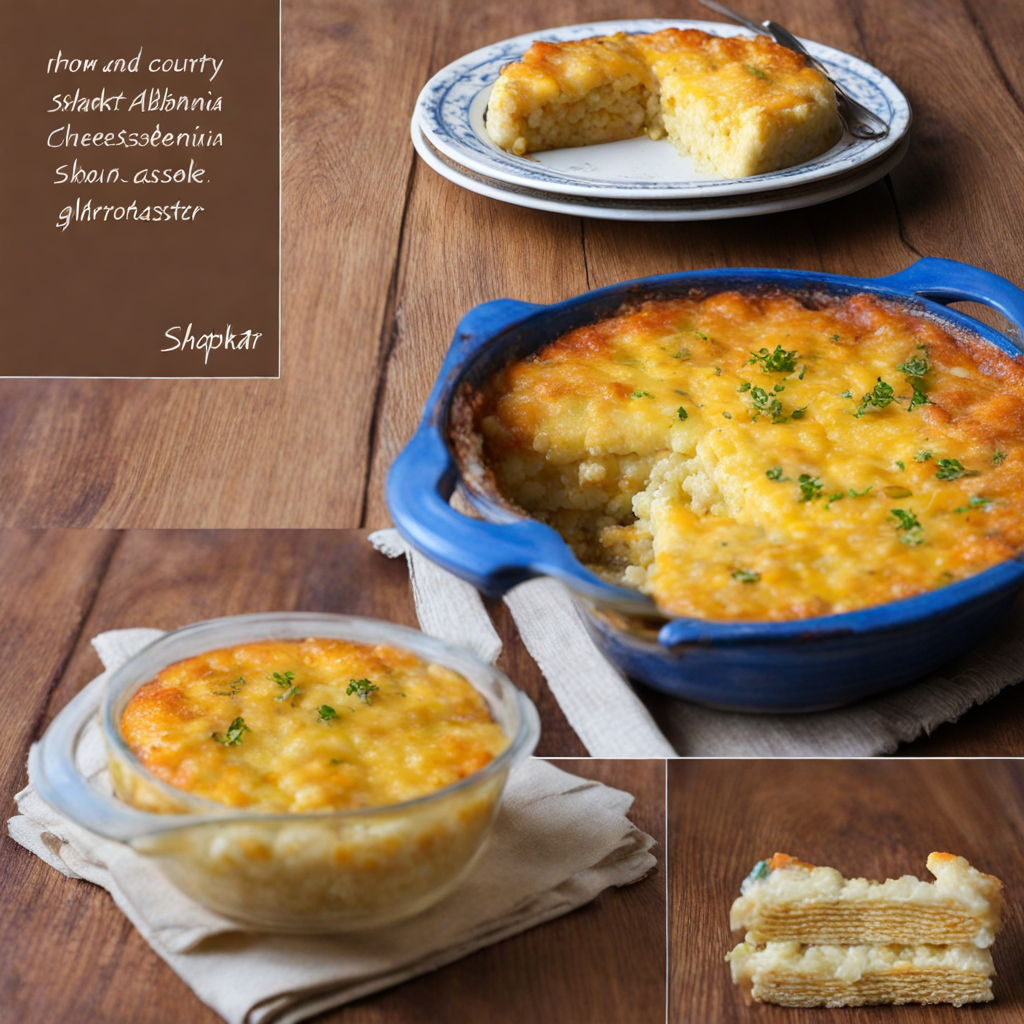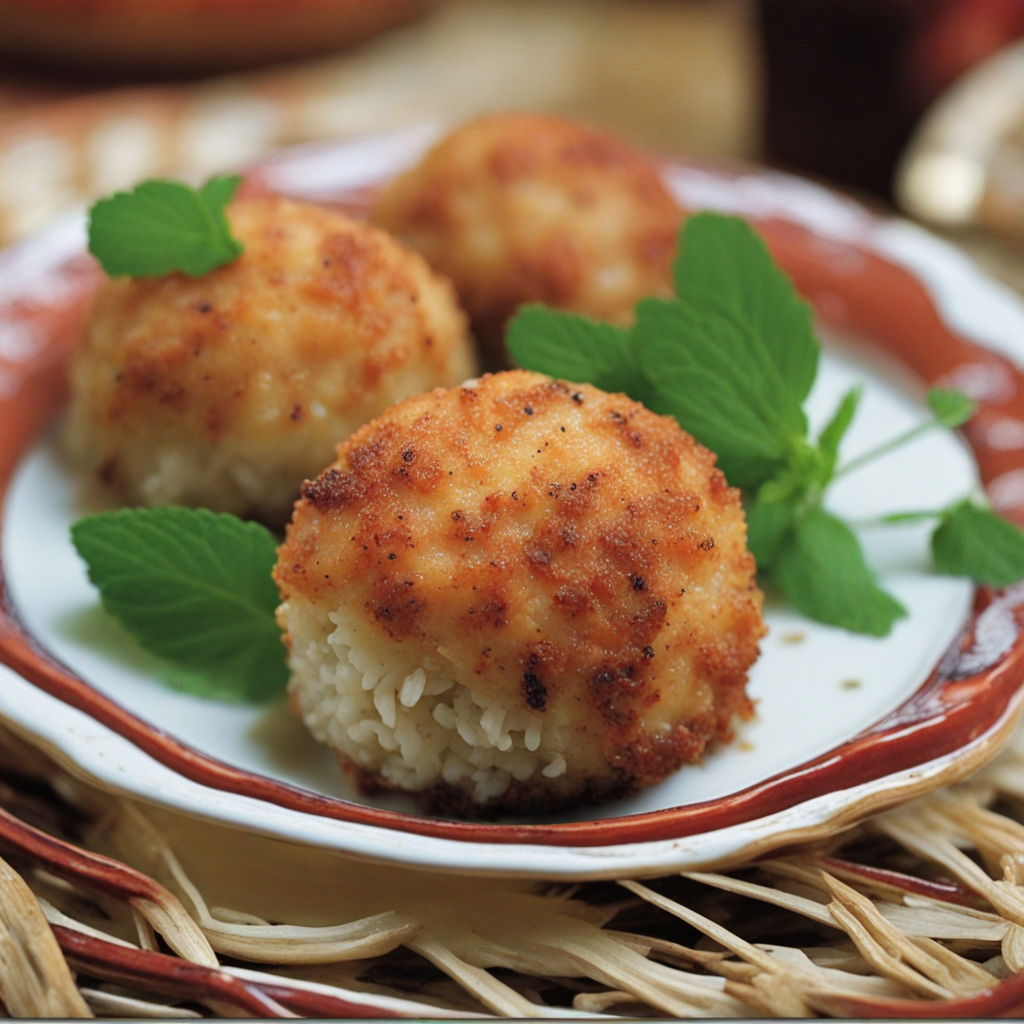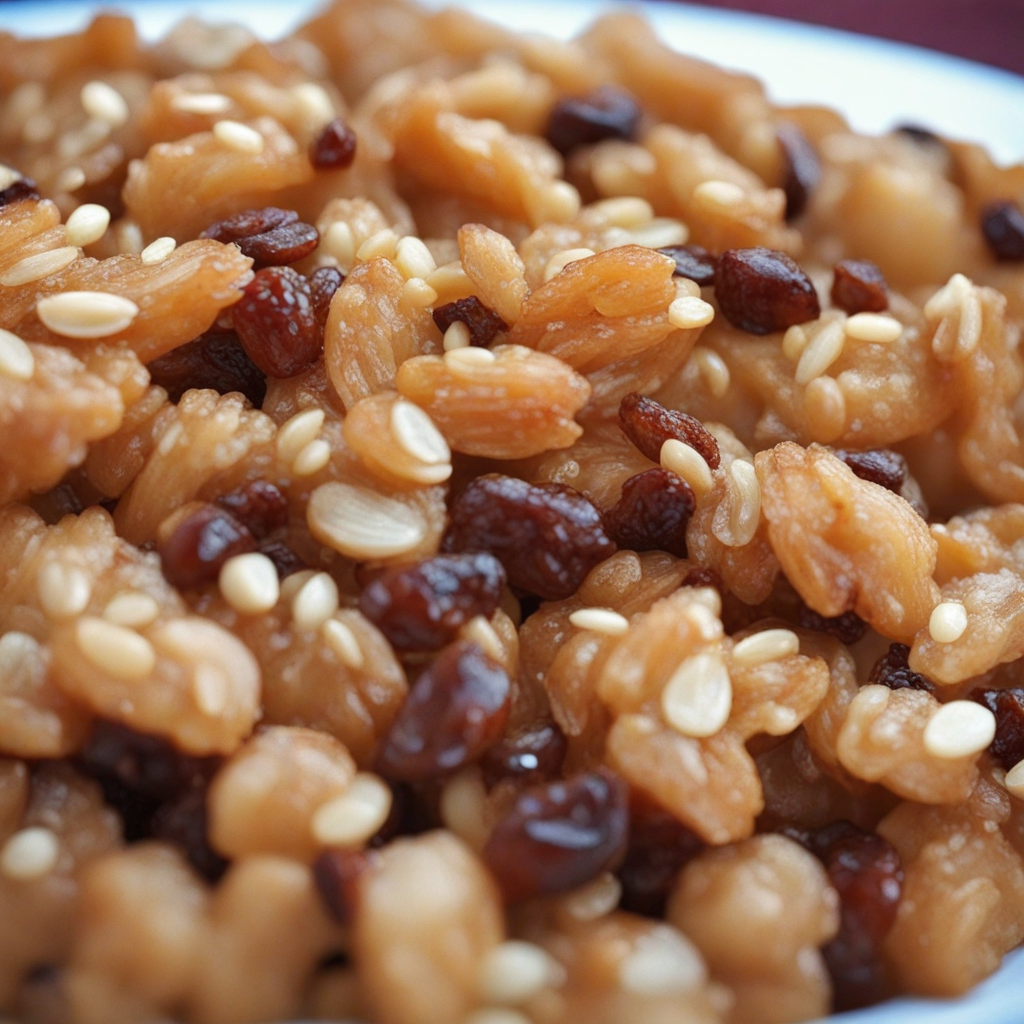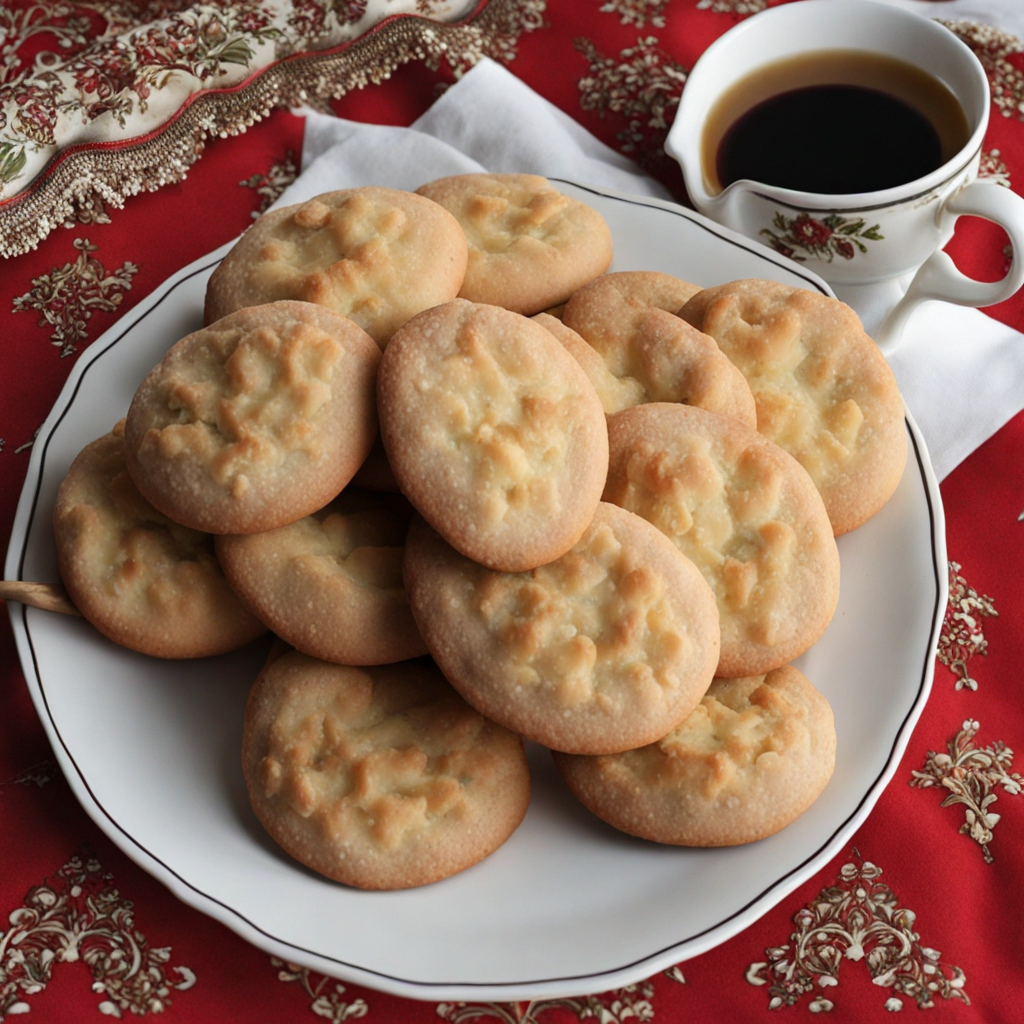Pite
Pite is a traditional Albanian dish that embodies the rich culinary heritage of the region. At its core, Pite is a savory pie made with thin layers of dough, similar to the technique used in making phyllo pastries. The filling is where the magic happens, as it can vary widely, encompassing ingredients like spinach, leeks, potatoes, or even pumpkin, all mixed with creamy cheeses and aromatic herbs. The combination creates a delightful balance of textures, with the crispy, flaky crust giving way to a warm, flavorful filling that is both hearty and satisfying. One of the most popular variations of Pite is Pite me Spinaq, which features a generous amount of fresh spinach mixed with ricotta or feta cheese, resulting in a dish that is not only delicious but also packed with nutrients. The pie is often baked until golden brown, allowing the flavors to meld beautifully, while the crust develops a satisfying crunch. This dish often finds its way to family gatherings and celebrations, showcasing the importance of community and tradition in Albanian culture. Pite is typically served warm, making it an ideal comfort food, and it can be enjoyed as a main course or a hearty snack. It pairs wonderfully with a dollop of yogurt or a tangy salad on the side, adding a refreshing contrast to the rich flavors of the pie. For those looking to explore the diverse tastes of Albanian cuisine, Pite offers a unique experience that is both comforting and adventurous, inviting everyone to savor the delicious layers of this beloved dish.
How It Became This Dish
The Culinary Journey of Pite: An Albanian Delight #### Origins of Pite Pite, a traditional Albanian dish, embodies the rich tapestry of the country's history and culinary evolution. Its roots can be traced back to the Ottoman Empire, which reigned over the Balkans for centuries. During this period, a fusion of cultures, languages, and cuisines occurred, leading to the development of many dishes that still resonate in Albanian kitchens today. Pite, which translates to "pie" in English, is a savory or sweet pastry that is often filled with a variety of ingredients, including vegetables, meats, and cheeses. The precise origins of pite are difficult to pinpoint, as similar pastry dishes exist across the Balkans and Mediterranean. The name itself is derived from the Turkish word "börek," a term used to describe a variety of layered pastries filled with ingredients. However, the Albanian version has taken on its own identity, characterized by its unique combinations and preparation methods. #### Cultural Significance Pite is more than just a dish; it is a symbol of Albanian hospitality and family traditions. In rural areas of Albania, pite is often made for special occasions such as weddings, holidays, and communal gatherings. The preparation of pite is a communal activity, where family members come together to share the workload and celebrate the process of cooking. This aspect of pite-making fosters social bonds and highlights the importance of community in Albanian culture. Albania, with its diverse geography ranging from mountains to coastal regions, has influenced the types of ingredients used in pite. For instance, in the mountainous areas, fillings might include wild greens and herbs, while coastal regions may feature seafood. This adaptability not only showcases the abundance of local produce but also reflects the historical trade routes that brought various ingredients to Albanian kitchens. #### The Evolution of Pite As Albania navigated through political changes and economic challenges throughout the 20th century, the preparation and consumption of pite evolved. The communist regime from the late 1940s to the early 1990s brought about significant changes in food availability and preparation practices. During this time, traditional recipes were often modified due to shortages of ingredients, and the emphasis on self-sufficiency led families to rely on what was locally available. In the post-communist era, Albania experienced a renaissance of its culinary traditions. With increased access to global ingredients and the re-emergence of traditional practices, pite began to regain its status as a beloved national dish. Chefs and home cooks alike started to experiment with modern twists on the classic recipes, incorporating international flavors while retaining the essence of traditional Albanian cooking. #### Varieties of Pite Pite can be found in various forms across Albania, with each region boasting its own specialties. Some of the most popular types include: 1. Pite me Spinaq (Spinach Pie): A savory pie filled with fresh spinach, feta cheese, and sometimes ricotta, encased in a flaky pastry. This version is especially popular during the spring when spinach is in season. 2. Pite me Mish (Meat Pie): Typically made with minced lamb or beef mixed with spices and herbs, this hearty version is a staple at family gatherings and celebrations. The filling may also include onions and rice, creating a rich and flavorful dish. 3. Pite me Perime (Vegetable Pie): A vegetarian option that incorporates various seasonal vegetables such as leeks, carrots, and peppers, often seasoned with local spices. This variety highlights the Albanian tradition of using fresh, local produce. 4. Pite e Dajlës (Dajlë Pie): Named after the Dajlë region, this pie is known for its unique combination of potatoes and cheese, offering a comforting and satisfying meal. 5. Pite me Molla (Apple Pie): While traditionally savory, pite also has sweet variations. The apple pie version is a delightful dessert, often spiced with cinnamon and served warm. #### Modern Influences In contemporary Albania, pite has transcended its humble roots and has become a culinary ambassador for the nation. As the country has opened up to tourism and international cuisine, pite has found its way onto restaurant menus both domestically and abroad. Chefs are now reimagining this classic dish, incorporating influences from Mediterranean, Italian, and even Middle Eastern cuisines, while still paying homage to traditional methods. The rise of food festivals and cultural events celebrating Albanian cuisine has also contributed to the resurgence of interest in pite. These gatherings often feature cooking demonstrations, where chefs showcase the art of making pite from scratch, drawing both locals and tourists into the process. The communal aspect of sharing food remains a central theme, with pite often served as a centerpiece during these celebrations. #### Pite in Albanian Identity Pite is a testament to the resilience and adaptability of Albanian culture. It is not merely a dish but a narrative that encapsulates the history, struggles, and triumphs of the Albanian people. The act of making pite is an embodiment of love, tradition, and community, passed down through generations. In a world where fast food and convenience often overshadow traditional cooking, pite stands as a reminder of the importance of heritage and the value of home-cooked meals. Whether enjoyed at a festive gathering or as a comforting dish on a quiet evening, pite continues to hold a special place in the hearts—and stomachs—of Albanians everywhere. #### Conclusion The story of pite is an intricate weave of history, culture, and culinary evolution. From its Ottoman influences to its modern adaptations, pite encapsulates the spirit of Albania. As it continues to evolve, this beloved dish remains a bridge connecting the past with the present, celebrating the richness of Albanian heritage and the communal joy of sharing food. So, whether you are savoring a slice of pite in a bustling restaurant in Tirana or preparing it in a cozy home kitchen, you are partaking in a timeless tradition that reflects the soul of Albania.
You may like
Discover local flavors from Albania


